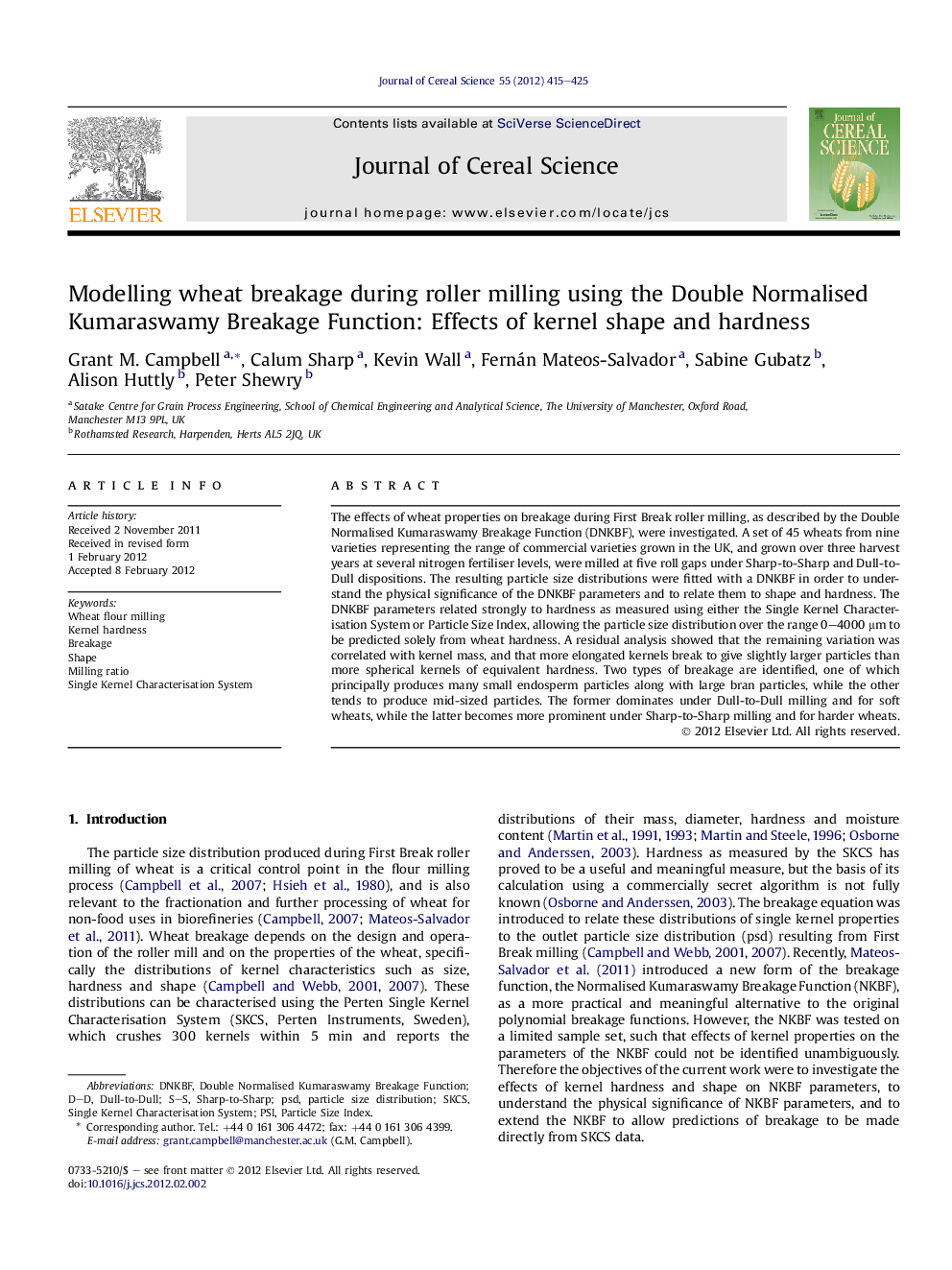| کد مقاله | کد نشریه | سال انتشار | مقاله انگلیسی | نسخه تمام متن |
|---|---|---|---|---|
| 4516032 | 1322339 | 2012 | 11 صفحه PDF | دانلود رایگان |

The effects of wheat properties on breakage during First Break roller milling, as described by the Double Normalised Kumaraswamy Breakage Function (DNKBF), were investigated. A set of 45 wheats from nine varieties representing the range of commercial varieties grown in the UK, and grown over three harvest years at several nitrogen fertiliser levels, were milled at five roll gaps under Sharp-to-Sharp and Dull-to-Dull dispositions. The resulting particle size distributions were fitted with a DNKBF in order to understand the physical significance of the DNKBF parameters and to relate them to shape and hardness. The DNKBF parameters related strongly to hardness as measured using either the Single Kernel Characterisation System or Particle Size Index, allowing the particle size distribution over the range 0–4000 μm to be predicted solely from wheat hardness. A residual analysis showed that the remaining variation was correlated with kernel mass, and that more elongated kernels break to give slightly larger particles than more spherical kernels of equivalent hardness. Two types of breakage are identified, one of which principally produces many small endosperm particles along with large bran particles, while the other tends to produce mid-sized particles. The former dominates under Dull-to-Dull milling and for soft wheats, while the latter becomes more prominent under Sharp-to-Sharp milling and for harder wheats.
► Wheat breakage during First Break roller milling was described by the DNKBF.
► The particle size distribution could be predicted accurately from wheat hardness.
► The DNKBF revealed that two types of breakage occur during roller milling.
► Breakage depends on wheat hardness, roll gap and roll disposition.
► Elongated kernels break to give larger particles than predicted from their hardness.
Journal: Journal of Cereal Science - Volume 55, Issue 3, May 2012, Pages 415–425